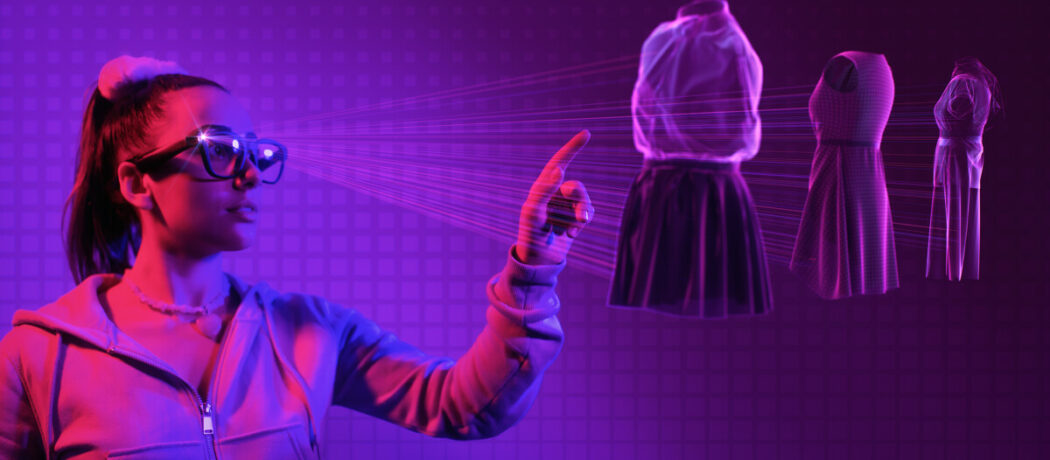Study provides insights into challenges and opportunities facing digital fashion
While the metaverse may still be in its infancy, many fashion brands have already been attracted by its potential to offer new experiences for a population of young tech savvy consumers. Virtual clothing and accessories for avatars, NFTs, digital fashion shows or games: these are just some examples in a digital fashion market that some predict will expand rapidly in the next years. A new study* has analyzed more than 7 000 comments on a selection of YouTube videos related to digital fashion to provide insights into consumers perceptions and feelings towards these early moves into digital fashion.

Share
The field of digital fashion is evolving rapidly as brands look at ways to leverage the metaverse’s potential for social interaction between users, for creating brand content, or for engaging users in parallel virtual experiences where they are owners (rather than brands).
Over the last couple of years, for example, the Decentraland platform has hosted the Metaverse fashion week, while luxury brands such as Balenciaga and Gucci have teamed up online gaming platforms such as Fortnite or Roblox to promote their products.
What are consumers’ perceptions of digital fashion?
A team of international researchers set out to study consumers perceptions of this evolving market: “To do this, we decided to carry out a text mining analysis of comments on a selection of YouTube videos on the topic of digital fashion. We chose this platform as it represents an important online space for members of the generations Z and Alpha where they openly discuss their virtual experiences and share their opinions”, explains Van Ha LUONG from IÉSEG, one of the coauthors of the study.
The 11 videos selected by the researchers collectively had generated over 8 million views and enabled them to gather more than 10 000 comments. The analysis allowed the team to group perceptions into six main topics that were also tested for sentiment analysis (a technique used to determine whether data is positive, negative or neutral.): aesthetic concerns; perceived value; resistance to purchasing digital clothing, excitement; virtual assets; and future expectations.
“The results highlight a number of opportunities and challenges for the digital fashion sector,” explains Van Ha LUONG.
“Clearly, we can see that the comments underline that the metaverse can generate excitement and positive expectations in terms of its future potential (the most positive in terms of sentiment analysis). However, the analysis also underlines that some brands will need to ensure that efforts are made to ensure that items are visually appealing and to overcome resistance or hesitation about purchasing digital fashion”.
Implications for brands
In the light of these findings, he believes that there are several applications for fashion brands and companies operating in, or looking to move into, the metaverse. Notably, he believes there is an opportunity for marketing professionals to develop clearer messages that explain the added value with transparent propositions.
He also suggests that brands can explore the possibilities of incorporating trials of digital products or goods or ways of creating better links between the experience online and real-world experiences. For example, customers can use their smartphones or computers to try on clothes virtually. An app can overlay the selected clothes on the customer’s live image or pre-uploaded photo, giving them an idea of how the item would look on them in real life. Customers can also mix and match different outfits, accessories, and shoes to see how complete outfits look together without having to physically try on each piece.
The importance of educating consumers
Finally, he believes that consumer education will also be key if the digital fashion sector is to realize its potential. Virtual commodities including digital fashion are still relatively new. Van Ha LUONG suggests, therefore, that brands can consider crafting engaging tutorials and guides on how to use digital fashion products, understand their benefits, and navigate virtual fashion platforms; and how to incorporate digital fashion into their daily lives.
Given the importance of sustainability and the environment to consumers, it will also be important for brands to address this topic in their digital fashion activities. For example, one example he explains would be the creation of a clothing exchange platform in Metaverse where customers upload digital versions of their real-life clothes to a virtual wardrobe. “This could provide opportunities for consumers to mix and match outfits, participate in virtual exchange events, and learn about sustainability through workshops and impact tracking. These VR (virtual reality) interactions could lead to real-world exchanges at local swap ‘meets’ and in-store drop-off points, enhancing engagement and promoting eco-friendly practices. This innovative approach educates consumers on sustainable fashion, reduces environmental impact, and strengthens the brand’s commitment to sustainability.”
*Additional information: “Is digital fashion the future of the metaverse? Insights from YouTube”, published in the Journal of Retailing and Consumer Services: Van Ha Luong (IESEG), Annalisa Tarquini (International University of Monaco), Yaprak Anadol (University of Milano Bicocca), Phil Klaus (International University of Monaco), Aikaterini Manthiou (NEOMA Business School)
Accompanying photo: iStock: credit – imaginima
Janvier 2025: Please note that Van Ha LUONG no longer works at IÉSEG. This article was published during his time at the School.




